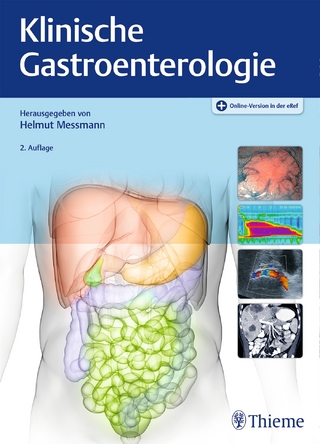
Genetic Diversity & Variability of Hepatitis B Virus
Seiten
2008
Nova Science Publishers Inc (Verlag)
978-1-60456-888-2 (ISBN)
Nova Science Publishers Inc (Verlag)
978-1-60456-888-2 (ISBN)
In spite of the progress made in vaccine and antiviral therapy development, hepatitis B virus (HBV) infection remains a major health care problem. Over 350 million people are chronically infected worldwide, showing differences in the severity of liver disease, clinical outcome and response to immune and antiviral-therapy.
In spite of the progress made in vaccine and antiviral therapy development, hepatitis B virus (HBV) infection still remains a major health care problem. Over 350 million people are chronically infected worldwide, showing differences in the severity of liver disease, clinical outcome and response to immune and antiviral-therapy. Parameters associated to the host immune system (HBV specific T and/or B-cell repertoires, defective antigen presentation and diminished Th1/Th2 response ratio) and viral factors, such as the HBV genotypes and their evolving variants, have largely contributed to the explanation of such differences. The unique genomic structure and replication cycle of HBV contribute to the occurrence of mutations in any of its genes undergoing selection pressures. The selection of one mutant over the others warrants a biological advantage to the prevalent mutation during the replication cycle of the virus or a selective advantage to the mutant over wild-type virus in host-virus interactions as the authors observed in Argentina where mutated HBsAg were detected, even in the presence of specific anti-HBs antibodies. Reports from USA, as well as from several European and Asian countries have focused on mutations within the HBV genome that may be associated with the hepatitis B vaccine and/or hepatitis B immune globulin (HBIG) failure, diagnostic escape mutants, antiviral therapy resistance, and differential outcomes in liver disease. In contrast, studies regarding these topics are almost lacking in Latin America. Within this context, it should be emphasised that the already known mutants circulating in other parts of the world could not necessarily be mirroring those strains circulating in this part of the American continent. Emerging data is filling the gap in our knowledge of HBV genotypes in several Latin American countries. While genotypes F and H of HBV are considered to be indigenous in this continent, genotypes A and D might be a mere reflection of a past European migration, and genotypes B and C could represent a consequence of a recent Asian migration. Few years ago, genotype G was detected in Mexico as previously identified in the USA and France. Unexpectedly, some strains ascribed to HBV genotype E (widely considered an African restricted genotype) have been observed in Argentina, even though genotypes F, A and D appear to be the most prevalent in this country. Co-circulation of all the already known genotypes and certain HBV variants in Latin America offers a unique opportunity to study basic viral and clinical features of this infection.
In spite of the progress made in vaccine and antiviral therapy development, hepatitis B virus (HBV) infection still remains a major health care problem. Over 350 million people are chronically infected worldwide, showing differences in the severity of liver disease, clinical outcome and response to immune and antiviral-therapy. Parameters associated to the host immune system (HBV specific T and/or B-cell repertoires, defective antigen presentation and diminished Th1/Th2 response ratio) and viral factors, such as the HBV genotypes and their evolving variants, have largely contributed to the explanation of such differences. The unique genomic structure and replication cycle of HBV contribute to the occurrence of mutations in any of its genes undergoing selection pressures. The selection of one mutant over the others warrants a biological advantage to the prevalent mutation during the replication cycle of the virus or a selective advantage to the mutant over wild-type virus in host-virus interactions as the authors observed in Argentina where mutated HBsAg were detected, even in the presence of specific anti-HBs antibodies. Reports from USA, as well as from several European and Asian countries have focused on mutations within the HBV genome that may be associated with the hepatitis B vaccine and/or hepatitis B immune globulin (HBIG) failure, diagnostic escape mutants, antiviral therapy resistance, and differential outcomes in liver disease. In contrast, studies regarding these topics are almost lacking in Latin America. Within this context, it should be emphasised that the already known mutants circulating in other parts of the world could not necessarily be mirroring those strains circulating in this part of the American continent. Emerging data is filling the gap in our knowledge of HBV genotypes in several Latin American countries. While genotypes F and H of HBV are considered to be indigenous in this continent, genotypes A and D might be a mere reflection of a past European migration, and genotypes B and C could represent a consequence of a recent Asian migration. Few years ago, genotype G was detected in Mexico as previously identified in the USA and France. Unexpectedly, some strains ascribed to HBV genotype E (widely considered an African restricted genotype) have been observed in Argentina, even though genotypes F, A and D appear to be the most prevalent in this country. Co-circulation of all the already known genotypes and certain HBV variants in Latin America offers a unique opportunity to study basic viral and clinical features of this infection.
Preface; Introduction; HBV Epidemiology in Latin America and the Caribbean (LAC) Region; HBV Variants and Mutants and Its Impact on the LAC Region; Conclusions; Index.
| Verlagsort | New York |
|---|---|
| Sprache | englisch |
| Maße | 230 x 150 mm |
| Gewicht | 224 g |
| Themenwelt | Medizinische Fachgebiete ► Innere Medizin ► Gastroenterologie |
| ISBN-10 | 1-60456-888-7 / 1604568887 |
| ISBN-13 | 978-1-60456-888-2 / 9781604568882 |
| Zustand | Neuware |
| Haben Sie eine Frage zum Produkt? |
Mehr entdecken
aus dem Bereich
aus dem Bereich
Buch | Softcover (2024)
Urban & Fischer in Elsevier (Verlag)
59,00 €


